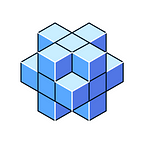What You Missed From The Thomas Bertani AMA
In ancient mythology, “oracles” were more or less fortune tellers, mystics capable of seeing the unknown future.
In the world of contemporary cryptocurrency, “oracles” are the technical solution for dealing with what is happening in the present, a means of securing accurate data that reflects what is actually happening in reality.
Equilibrium recently hosted Thomas Bertani, founder and CEO of blockchain oracle service Provable Things for an AMA session that covered his background, his company, and how he thinks about certain problems within the space.
The AMA session was streamed for a live audience that chimed in with their own questions. If you want to watch that, it’s available right here on YouTube. If you’d rather read text that condenses the hour-long video to several paragraphs, then keep reading right along:
Tell us a little bit more about yourself and how you got started in the blockchain world.
I’ve been in the space since 2012, so a total of 8 years. Over those 8 years I can definitely say that the blockchain world has changed so many times. Every time it changes it feels like a new ecosystem. That’s not to say we start from scratch every time, but that there’s a different hot topic every couple of years. It depends on what the interesting use cases are, the alternatives, and what’s left to be made.
I had a technical background and I was interested in parallel computing during university. It’s what’s under the hood when it comes to typical proof of work mining. I discovered Bitcoin because of GPU mining parallel computing aspect. I started out of technical interest. No one knew anything back then about Bitcoin or its implications. My friends asked me what I was doing with this “fake money,” they had no context for it.
After 4 or 5 months of this, I decided I wanted to pursue it full time. I left university and my job, and I started getting involved. I went to some meetups to build a community of other people crazy enough to be interested in Bitcoin, as there was nothing else around at the time. Then I was employee number four of a Texas-based mining company. We very quickly won 5% of the total Bitcoin hashrate.
What led you to create Provable Things? What is the company all about?
This is an easy question to answer today. It was harder to answer three years ago. I came up with the idea while preparing a presentation for crypto, explaining why cryptocurrency was important to a general audience, to everyone. I had to explain how blockchain could have an impact on anything in the world. The missing piece was the oracle. The oracle is what makes blockchains speak with the
It can read real-world events, we needed it. That’s what Oraclize, now called Provable Things, has been doing for over five years.
Do smart contracts play a role in this? How does this actually function?
Any external site we want to get data from becomes a data source. This calls for communication with a dApp or smart contract. The third entity in the system is normally a smart contract. The smart contract, the oracle, and the data source — the oracle wants to make the other two parties communicate. You want to encode the data without tampering with that data in transit, enabling it in a secure way.
We don’t guarantee privacy because data on the blockchain is visible to everyone. We care about transparency, we want to ensure data from Accuweather actually comes from Accuweather, for example.
Where do you see this going?
There are strong needs for reliable oracles within DeFi. I’ve seen hundreds of applications and internet use cases based on an oracle, but the number of applications that got traction on the blockchain in general are still quite limited.
The number of them that are gaining traction need an oracle, and a big chunk of those are DeFi-oriented. They’re increasingly secure for protecting the amount of money at stake in DeFi protocols. I think the target market for this oracle product is mostly the dApps and the smart contracts being designed for DeFi use cases in mind.
What are pTokens?
pTokens are a new project we started one year ago within Provable. This is about moving tokens and cryptocurrencies across blockchains. If a smart contract on one blockchain wants to leverage a token on another, that becomes possible. It’s applicable to any blockchain, even the ones that aren’t that “smart.”
It makes Bitcoin cross-chain. It grants access to new liquidity. If you’ve got a super-secure stablecoin called EOSDT, for example, you can have it on a liquid sidechain, on Libra, on anything. pTokens is a system for moving assets around freely. It’s safe and general purpose.
Do you see this being used mostly for dApps, or is it going somewhere else?
pTokens wants to stay compatible with existing blockchains so that they can work with crypto assets in other blockchains. On EOS, for example, you could have a BTC token that looks like a normal EOS token within the EOS ecosystem. So who is this useful for? For DeFi, first and foremost.
How does Provable Things deal with scalability?
For scalability, the system is designed to scale horizontally. There can be new nodes. Over the years, the system has become increasingly robust, but there are still so many things that could go wrong.
Which is better for DeFi — EOS or Ethereum?
We are integrated with both, I don’t personally have a strong opinion. I think they could both succeed here. It’s easier to build on Ethereum because the tools there have been out for longer. People have more resources there.
EOS has more flexibility, and can be more powerful more easily. Any fight between these two blockchains isn’t really a big deal. As soon as we can make them talk to each other, they can work together.
